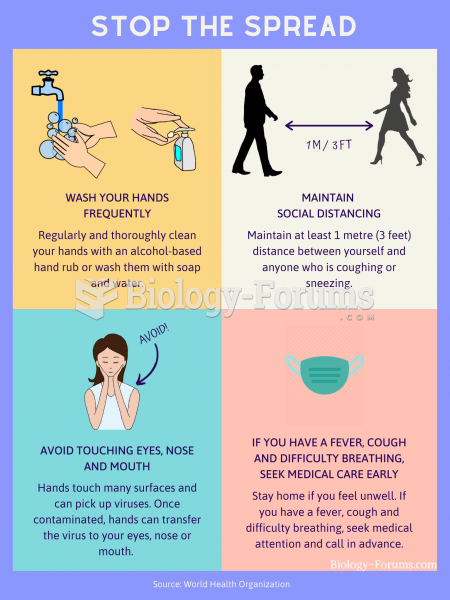Answer to Question 1
Correct Answer: 3,4,5
Rationale 1: Loperamide (Imodium), an antidiarrheal, is effective at relieving symptoms of diarrhea in clients with IBS.
Rationale 2: For many years, tricyclic antidepressants such as doxepin (Sinequan) have been used to treat clients with IBS who have pain as a major symptom.
Rationale 3: The first step of IBD treatment is usually with a 5-aminosalicylic acid (5-ASA) agent, which can include sulfasalazine (Azulfidine).
Rationale 4: When IBD is especially severe or when clients have not responded well to the 5-ASA drugs, oral corticosteroids such as prednisone are used.
Rationale 5: Should therapy with corticosteroids fail, or if they are needed for prolonged periods, step 3 of IBD therapy includes immunosuppressive agents, such as azathioprine (Imuran).
Global Rationale: The first step of IBD treatment is usually with a 5-aminosalicylic acid (5-ASA) agent, which can include sulfasalazine (Azulfidine). When IBD is especially severe or when clients have not responded well to the 5-ASA drugs, oral corticosteroids such as prednisone are used. Should therapy with corticosteroids fail, or if they are needed for prolonged periods, step 3 of IBD therapy includes immunosuppressive agents, such as azathioprine (Imuran). Loperamide (Imodium), an antidiarrheal, is effective at relieving symptoms of diarrhea in clients with IBS. For many years, tricyclic antidepressants such as doxepin (Sinequan) have been used to treat clients with IBS who have pain as a major symptom.
Answer to Question 2
Correct Answer: 2
Rationale 1: Symptoms of hyperemesis gravidarum disappear after pregnancy is terminated.
Rationale 2: Pharmacotherapy with fluid and electrolyte solutions and antiemetics is initiated after other antinausea measures have proven ineffective.
Rationale 3: Pharmacotherapy with fluid and electrolyte solutions and antiemetics is initiated after other measures have proven ineffective.
Rationale 4: Pharmacotherapy with fluid and electrolyte solutions and antiemetics is initiated after other measures have proven ineffective.
Global Rationale: Pharmacotherapy with fluid and electrolyte solutions and antiemetics is initiated after other antinausea measures have proven ineffective. Symptoms of hyperemesis gravidarum disappear after pregnancy is terminated.







